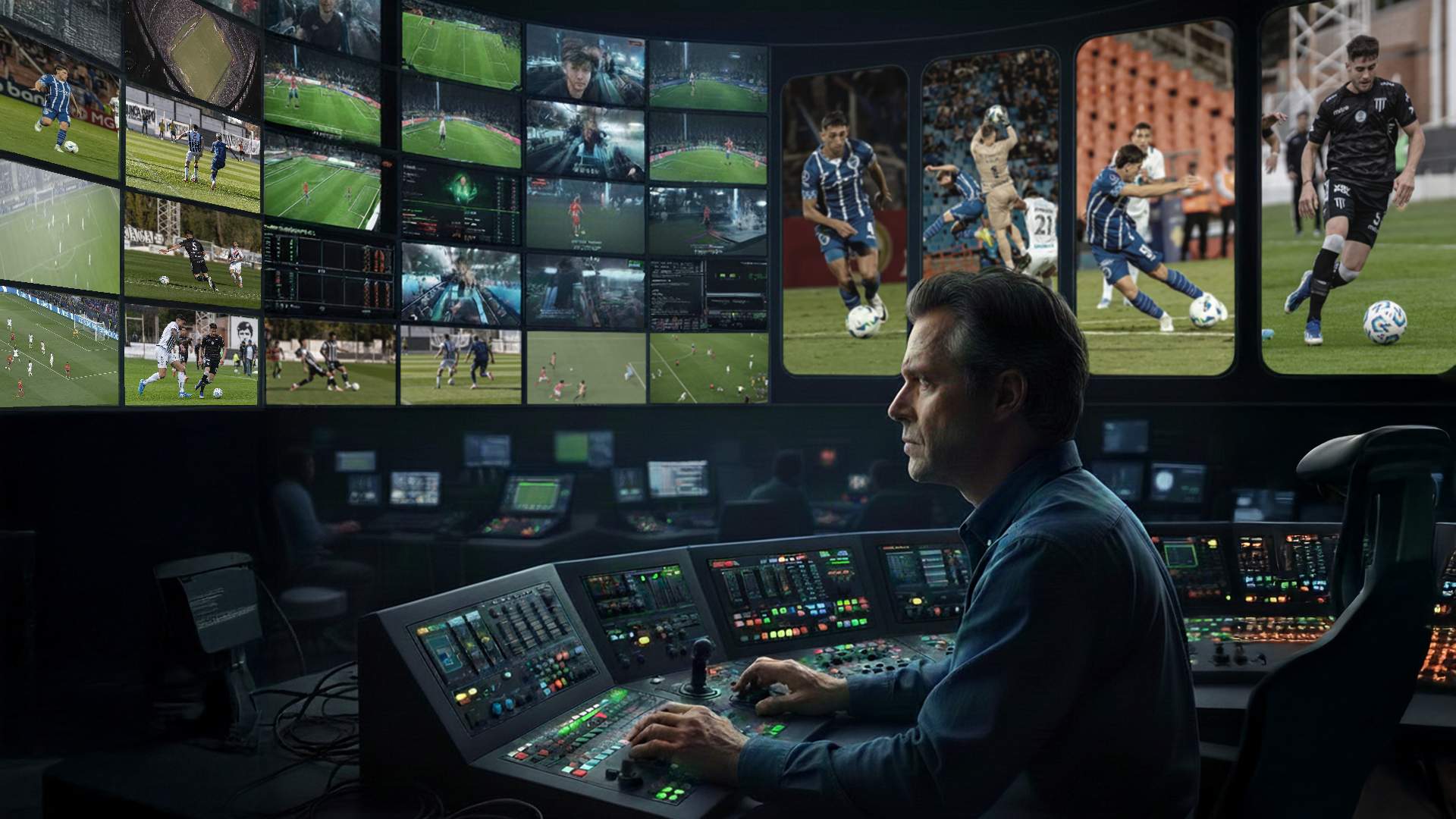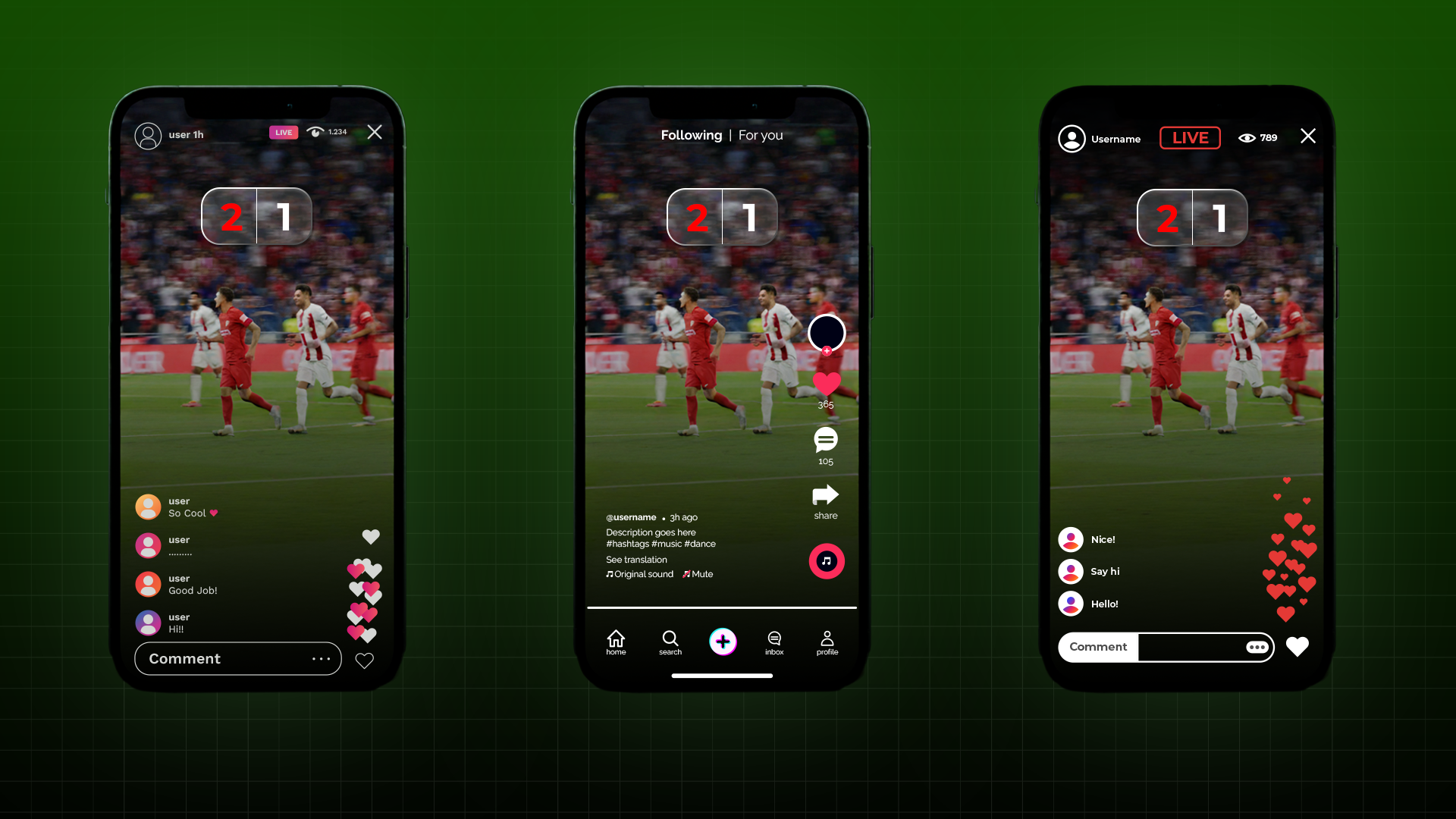Introduction
Before the cameras roll and before the crowd roars, there’s one person who turns a field of play into a story: the broadcast director. Sitting in a control room lined with monitors, they decide what millions will see next: the winning shot, the stunned faces, the slow-motion replay that defines the moment. Their split-second calls are what make live sports the spectacle we know and love.
But while the director’s craft hasn’t changed a lot, the audience has, they no longer sit still in front of TV screens. They scroll, swipe, and watch vertically, highlights, replays, and live feeds, all on their phones. A single match now has to serve two audiences at once: the traditional television viewer and the mobile-first fan.
The question is, how do you serve both, without doubling the people, gear, or cost?
Because ignoring mobile is not an option anymore. That’s where the younger fans are, scrolling through highlights, catching replays between messages, and expecting instant, crisp, phone-ready visuals. But building a whole new production setup for it isn’t realistic. The real goal is simpler: one capture, two experiences. To innovate for mobile without breaking the workflows that keep live television running smoothly. This blog dives into that exact challenge, the broadcast director’s dilemma, and how Quidich’s QuickFlip is redefining the way OB teams produce for both screens in real time.
The Director’s Dilemma

Inside a live gallery, a broadcast director is juggling a dozen things every second: camera cuts, sponsor graphics, replays, compliance checks, commentary cues, and latency between feeds, all while keeping the storytelling fluid and consistent.
Now, add one more layer: a mobile-first feed.
Vertical framing. Tighter shots. On-screen text that needs to stay readable. Fans watching on phones, swiping away if a frame feels cluttered. Suddenly, the director needs another gallery, another team, and another set of graphics, just to deliver the same match in a new format. That’s double the workflow, double the risk.
When two parallel productions run, new problems appear:
- Sync drift between horizontal and vertical outputs.
- Conflicting editorial choices, one camera angle works for TV, another for mobile.
- Sponsorship inconsistencies, where the brand integration doesn’t match.
And ultimately, two shows instead of one unified story. The ideal solution?
A single editorial workflow that delivers both outputs, without a second of extra logistics.
One workflow, two outputs
The answer doesn’t lie in adding more crew; it lies in smarter automation that blends seamlessly into existing production systems. An AI-assisted workflow can empower directors to maintain one consistent narrative across both screens. It doesn’t replace the creative control of a director; it simply removes repetitive, manual framing work and unnecessary logistical overhead.
This means no new production units, no duplicated feeds or infrastructure, Lower operational costs, and reduced carbon footprint from fewer deployed resources. A partial or complete AI-based workflow is not a replacement for the existing crew, but a tool to make certain difficult manual work simpler and eliminate unnecessary logistics.
QuickFlip: AI that makes it easy

That’s where QuickFlip steps in, leveraging state-of-the-art AI models to convert traditional 16:9 horizontal video feeds into dynamic vertical formats like 9:16 and 1:1. The technology uses its machine learning capabilities to precisely identify and emphasise crucial moments in the game. QuickFlip’s AI leverages an attention training mechanism that tracks where the human eye focuses during a cricket game. The AI model is trained using extensive datasets from previous sports broadcasts, ensuring it can accurately identify moments of action and adjust framing in real-time.
One of QuickFlip’s key features is its Smart Cut Detection System. This system reads the incoming world feed and automatically detects scene transitions, ensuring smooth cuts between camera angles without breaking the viewer’s experience.
QuickFlip’s plug-and-play Integration makes it fit effortlessly into any OB setup, from traditional SDI workflows to cloud-based delivery pipelines. It’s designed for compatibility, not overhaul, meaning crews can deploy it instantly without reworking their infrastructure.
And this isn’t just theory.
QuickFlip's deployment at the ICC Men's T20 World Cup was a resounding success. It was first implemented downstream at the Star Office in Mumbai, powering the MaxView feature on the OTT platform Disney+ Hotstar. This allowed users to experience the match in a vertical format, providing a mobile-first viewing experience that resonated with today's audience.
The Final Outcome

For a live match, the process is simple. The director cuts as usual, and QuickFlip automatically adapts the framing and graphics for mobile. Even live ads get seamlessly integrated into the vertical feed. Post-match, the same feed generates vertical highlights with consistent branding, verified sponsor visibility, and no manual intervention. The result: cleaner visuals on mobile, longer watch times, higher clip completion rates, and unified storytelling, all without extra crews, galleries, or parallel workflows.
















